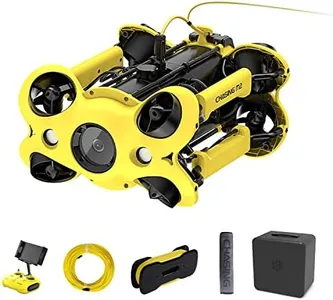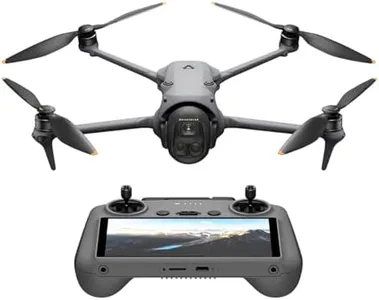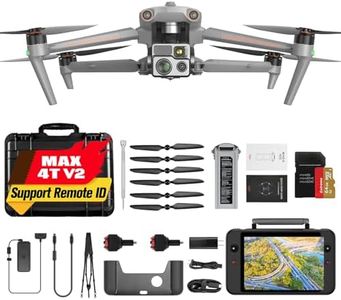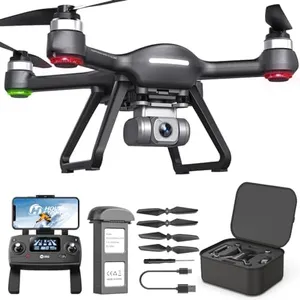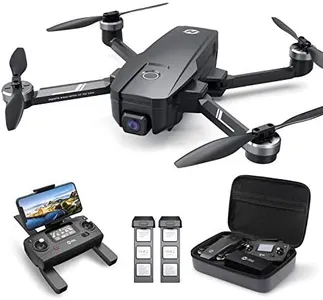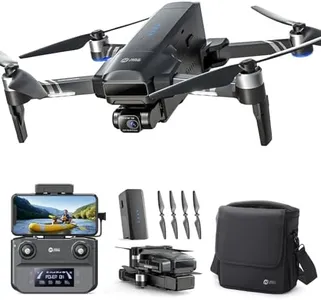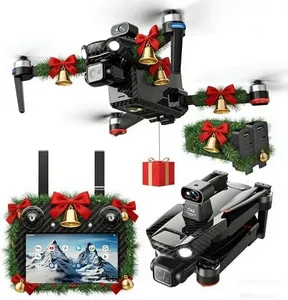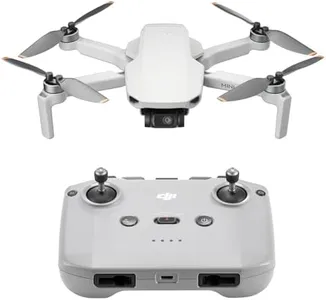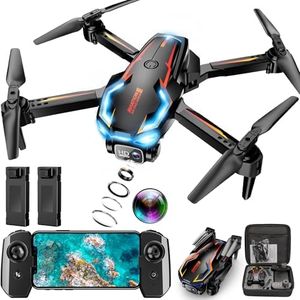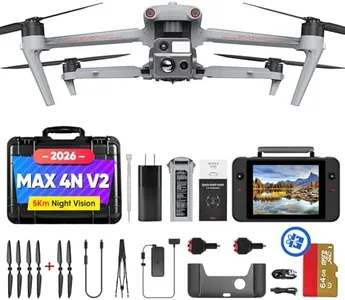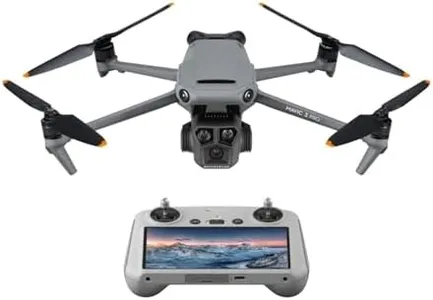10 Best Drones 2025 in the United States
Our technology thoroughly searches through the online shopping world, reviewing hundreds of sites. We then process and analyze this information, updating in real-time to bring you the latest top-rated products. This way, you always get the best and most current options available.

Our Top Picks
Winner
DJI Mini 5 Pro Fly More Combo Plus with DJI RC 2, Drone with Camera, 1-Inch CMOS, 4K Drone for Beginners, Obstacle Sensing, ActiveTrack 360°, 225° Gimbal Rotation, Extended Battery Life
Most important from
496 reviews
The DJI Mini 5 Pro Fly More Combo Plus is a compact, lightweight drone that's great for beginners and those wanting high-quality aerial footage. It features a large 1-inch camera sensor capturing sharp 4K videos at 60 frames per second with vibrant colors, making it excellent for detailed and smooth recordings. Its 50-megapixel photo capability also stands out for impressive still shots. Flight time is strong, offering up to 52 minutes per battery, which is above average and means longer sessions before needing to recharge. The included three batteries and fast charging hub add convenience for extended flying.
The drone’s portability is a clear strength — it folds small enough to fit in your pocket or the included shoulder bag, perfect for travel. DJI has packed in advanced safety features: omnidirectional obstacle avoidance uses forward LiDAR and vision sensors, improving safety even at night, while the upgraded ActiveTrack 360° helps the drone follow moving subjects smoothly and reliably. Control is user-friendly with the included DJI RC 2 remote, designed for responsive handling.
Users should note that the DJI Fly app must be downloaded directly from DJI's site due to Google Play removal, which could be a minor hassle. While the drone excels in many areas, the 249-gram weight may limit wind resistance compared to heavier models, though it helps with portability. This drone suits hobbyists and beginners who want advanced camera features and smart flight capabilities packed into a very portable design.
Most important from
496 reviews
DJI Mavic 4 Pro Drone with DJI RC 2, Flagship Tri-Camera Drone with 100MP 4/3 CMOS Hasselblad Camera, for Professionals, 30km/18.6mi Video Transmission, 51-Min Max Flight Time
Most important from
244 reviews
The DJI Mavic 4 Pro stands out as a high-end camera drone designed for professional and serious hobbyist use. Its 100MP Hasselblad main camera with 6K/60fps HDR video captures extremely detailed and vibrant footage, which is excellent for anyone prioritizing image quality. The dual telephoto cameras add versatility by allowing sharp zoom shots, and the unique 360° Infinity Gimbal helps create smooth, cinematic angles.
Flight time is impressive at up to 51 minutes, giving you plenty of airtime to capture the perfect shot without frequent battery swaps. It offers a strong video transmission signal with a range up to 30 kilometers (18.6 miles), though real-world connection distance may vary depending on conditions. The included DJI RC 2 remote has a bright, rotatable 7-inch screen that’s easy to carry and provides professional-level control. Obstacle avoidance is advanced, with sensors that work even in very low light, making night flying safer than many drones in this class.
The drone is relatively heavy at over 2 kilograms and somewhat bulky, which might be less convenient for casual users seeking maximum portability. Additionally, since the DJI Fly app is no longer available on Google Play, users will need to manually download the latest version from DJI’s website, which could be a minor inconvenience. This drone excels in camera performance, flight time, and professional control features, making it a solid choice if you want high-quality aerial photography and accept the extra weight and setup considerations.
Most important from
244 reviews
Autel Robotics EVO II Dual 640T V3, 640x512 Thermal Imaging Drone, Remote ID Supported, 0.8'' CMOS&50MP 8K RYYB Sensor,10+ Temp Measurement, D-RI Ranges, Thermal Analysis Tool, for Search&Rescue/Power Inspection/Public Safety/Hunting
Most important from
49 reviews
The Autel Robotics EVO II Dual 640T V3 is a highly capable drone perfect for professionals in fields such as search and rescue, power inspection, and public safety. One of its standout features is its exceptional camera quality, featuring a 50MP visible camera and a 640x512 thermal imaging sensor, which allows for detailed imaging even in low-light conditions. With a flight time of up to 38 minutes, users can cover extensive areas without frequent recharges, making it ideal for various applications.
This drone is equipped with advanced obstacle avoidance technology, ensuring safe navigation, and has a range of up to 15 kilometers for video transmission, which is impressive for monitoring large locations. The included smart controller enhances usability, providing a user-friendly interface with excellent connectivity options.
The drone is relatively heavy at 2.51 pounds, which could affect portability for some users. While the thermal imaging capabilities are advanced, the price point may be a barrier for hobbyists, as it primarily targets professional users with specific needs. Users should be prepared for the logistics involved in maintaining multiple batteries for prolonged operations.
The Autel EVO II Dual 640T V3 excels in high-quality imaging and specialized features for professional use, although its weight and cost may limit its appeal to casual users. Those involved in serious inspection, emergency response, or technical fields will find it highly beneficial.
Most important from
49 reviews
Buying Guide for the Best Drones
Choosing the right drone can be exciting but also a bit overwhelming given the wide variety of options available. Before buying a drone, think about why you want one—is it for photography, racing, learning to fly, or maybe just for fun? The answer will guide you towards certain types and features. Read up on local rules and regulations for drone use, as some places have specific laws you must follow. Most importantly, don’t be tempted by the flashiest features if you won’t use them; focus on specs that match your actual uses and skill level.FAQ
Most Popular Categories Right Now
